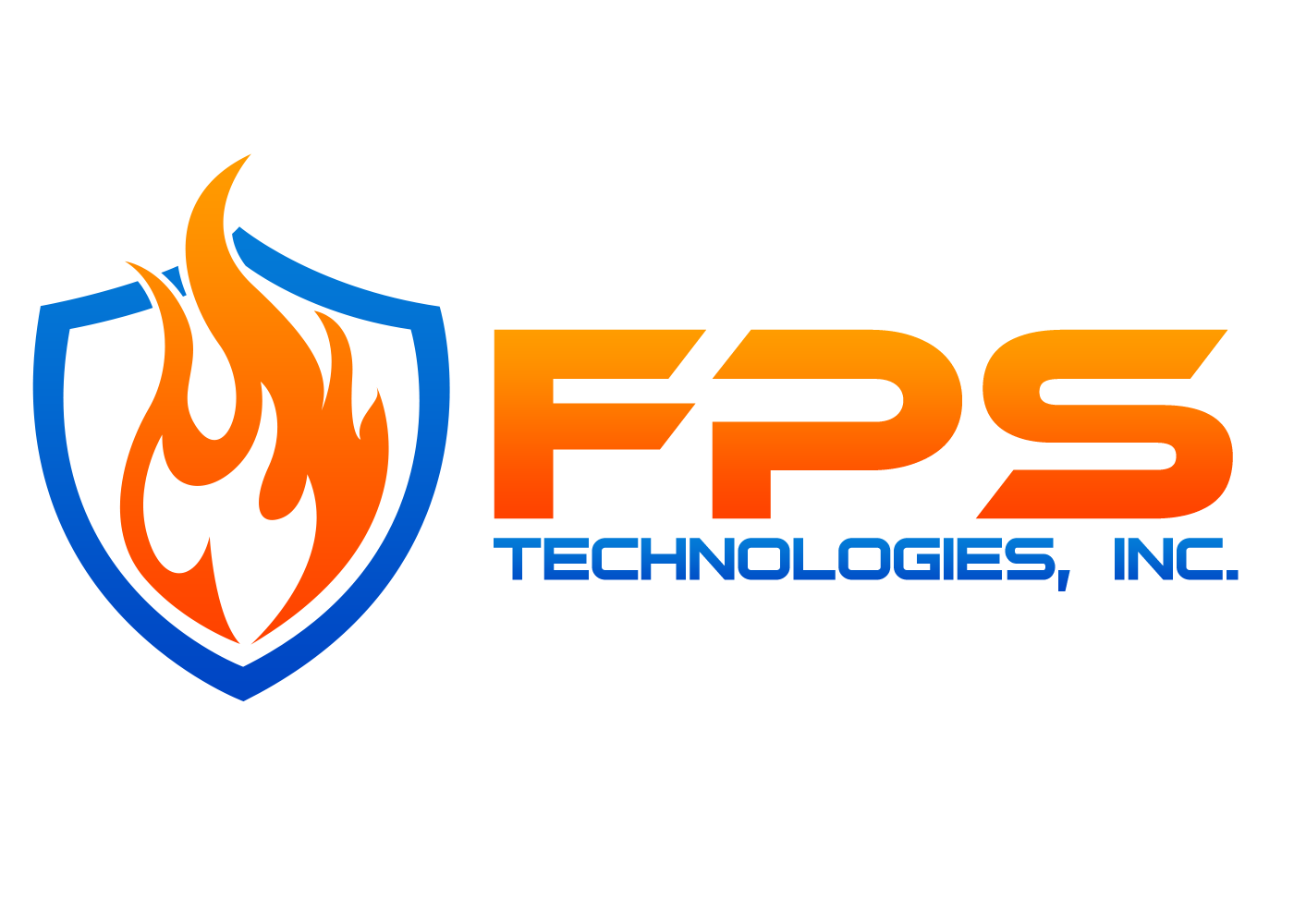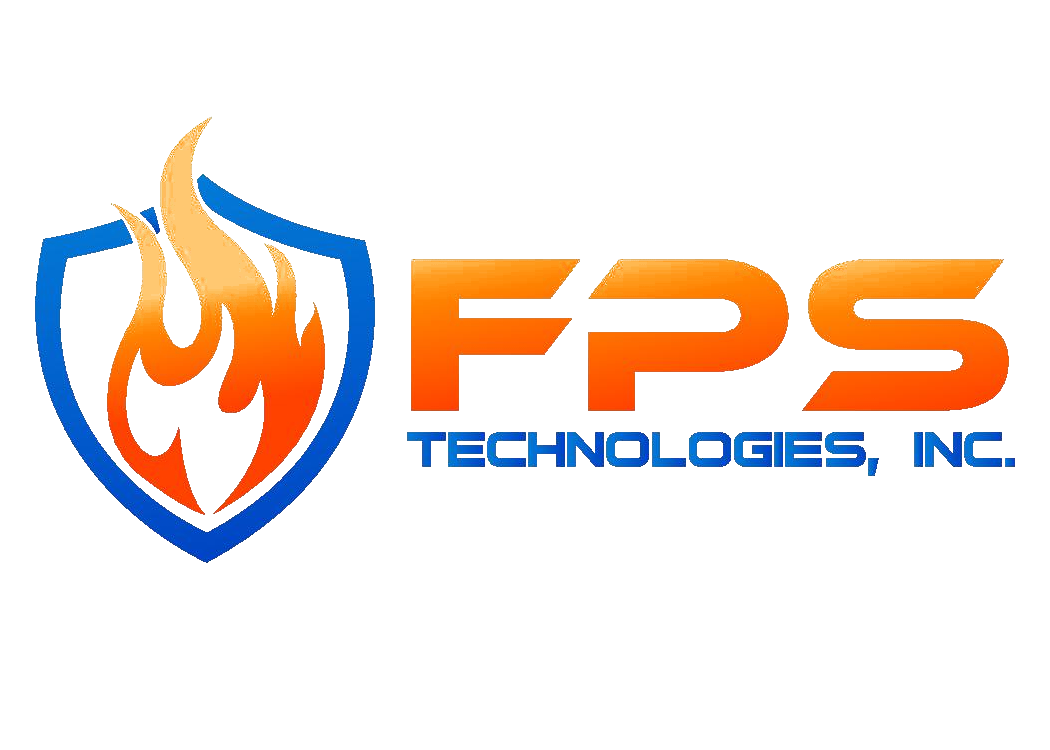You know that building codes require fire extinguishers for your business, but do you know what kind of extinguishers you should have? Do you know how many you need and where you should store them? In this article, we’ll share the five fire extinguisher classes and help you figure out how many you need to protect your property.
Fire Extinguisher Classes
Choosing the correct class of fire extinguisher for your business is essential because not all extinguishers will put out all types of fire. In some cases, using the wrong type can actually make a fire grow quicker. You should choose fire extinguishers based on the type(s) of fires that are likely to occur in your business.
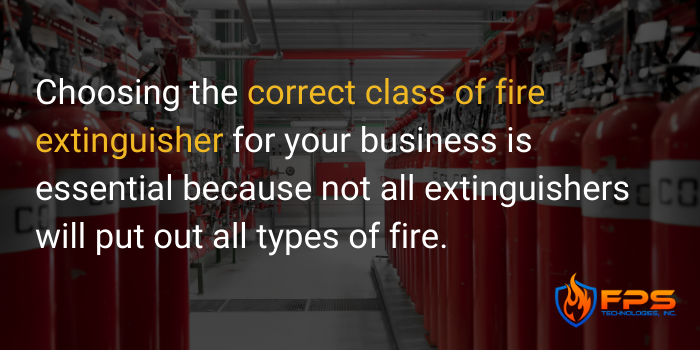
There are five classes of fire extinguishers based on the types of materials they can smother.
Class A
Class A extinguishers put out combustible fires from items such as wood, paper, textiles, or plastic. They use water, dry powder, or halon to either absorb the heat from the fire or coat it in dry chemicals to extinguish it.
Class B
Class B extinguishers put out fires from flammable liquids such as grease, gas, oil, or paint. They use C02, dry powder, or halon to deprive the fire of oxygen and stop the release of combustible vapors.
Class C
Class C extinguishers are suitable for putting out electrical fires in motors, transformers, or other electrical equipment. They use C02, dry powder, or halon to make the equipment nonconductive, thereby interrupting the flow of electricity and extinguishing the fire.
Class D
Class D extinguishers are for flammable metals such as potassium, lithium, or sodium. They use dry powder to won’t react with the metals to extinguish the fire.
Class K
Class K extinguishers are for cooking greases and oils and such as animal and vegetable fats. They extinguish fires through saponification, which is when you combine an alkaline mixture with cooking oils. The result is a soapy mixture that suffocates the grease fire.
Several fire extinguishers are multi-use and can put out a variety of fires.
What Happens if You Use the Wrong Fire Extinguisher?
As stated above, the stakes of choosing the wrong fire extinguisher are high. Using the wrong type of fire extinguisher can make the fire worse, or even electrocute you. If you have a fire extinguisher or plan to buy one, make sure you know what classification it is, and where to use or NOT use it.
CO2 Extinguishers
CO2 extinguishers use carbon dioxide to smother the fire, depriving it of oxygen. However, you should be careful when using them in a very small room. When fires start, so does panic, which means your breathing will quicken and you’ll need more oxygen. The biggest risk with CO2 fire extinguishers is the possibility for them to suffocate not just the fire, but you as well. As quickly as possible, extinguish the fire and leave the room to a better-ventilated space.
CO2 extinguishers should not be used on chemical fires. Depending on the chemical, the carbon dioxide could cause a reaction, making the fire worse, or even causing an explosion.
Water Extinguishers
If you work in an area with open electrical circuits, do NOT use a water extinguisher. The biggest mistake people make is not checking which type of extinguisher they have, so in an emergency, they can make a mistake. Water extinguishers can conduct electricity from the fire to your hands, electrocuting you. They can also cause electrical explosions.
If you’re using a water extinguisher on an oil fire, you may spread the oil around, making the fire worse.
How many extinguishers does your building need?
The size of your building and the type of potential fire hazards in it dictate how many extinguishers you should have. Your local building codes also influence your fire protection needs. Consult a fire protection professional for assistance in determining your fire risk and protection needs.
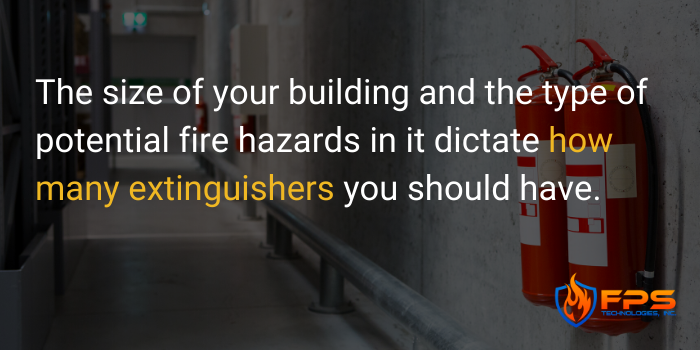
According to OSHA, there shouldn’t be more than the following distances between extinguishers:
- Class A = 75 feet or less
- Class B = 50 feet or less
- Class C = based on A or B hazard (Class C fires are Class A or B fires involving electrical equipment, so base your Class C extinguisher placement on whether it’s an A or B hazard.)
- Class D = 75 feet or less
- Class K = no standard since they’re located directly above cooking surfaces
Handheld fire extinguishers are not suitable for fighting large fires, but they are highly effective for stopping small fires before they grow and spread. They should be located in obvious locations along normal paths so that they are very easy for employees to access and use as soon as a fire starts.
Fire extinguisher training
In addition to providing fire extinguishers, employers should also provide training to employees so they can use extinguishers safely and effectively. FPS offers extinguisher training, so get in touch to learn about how our highly qualified fire experts can prepare your workforce for an emergency.
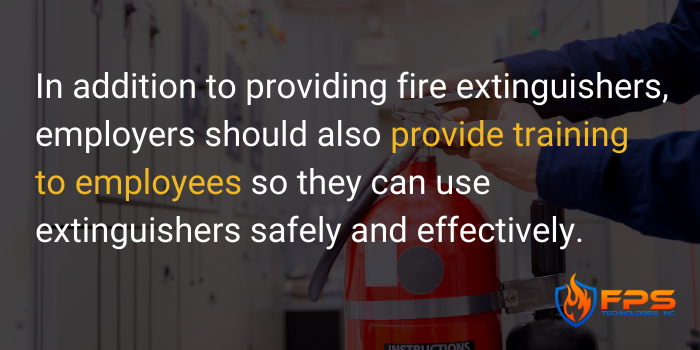
If you’re not sure which type of extinguisher you should have or where to store it, schedule a consultation. We can walk through your property together and help you assess your fire risk to determine the best type of extinguisher and storage locations.
